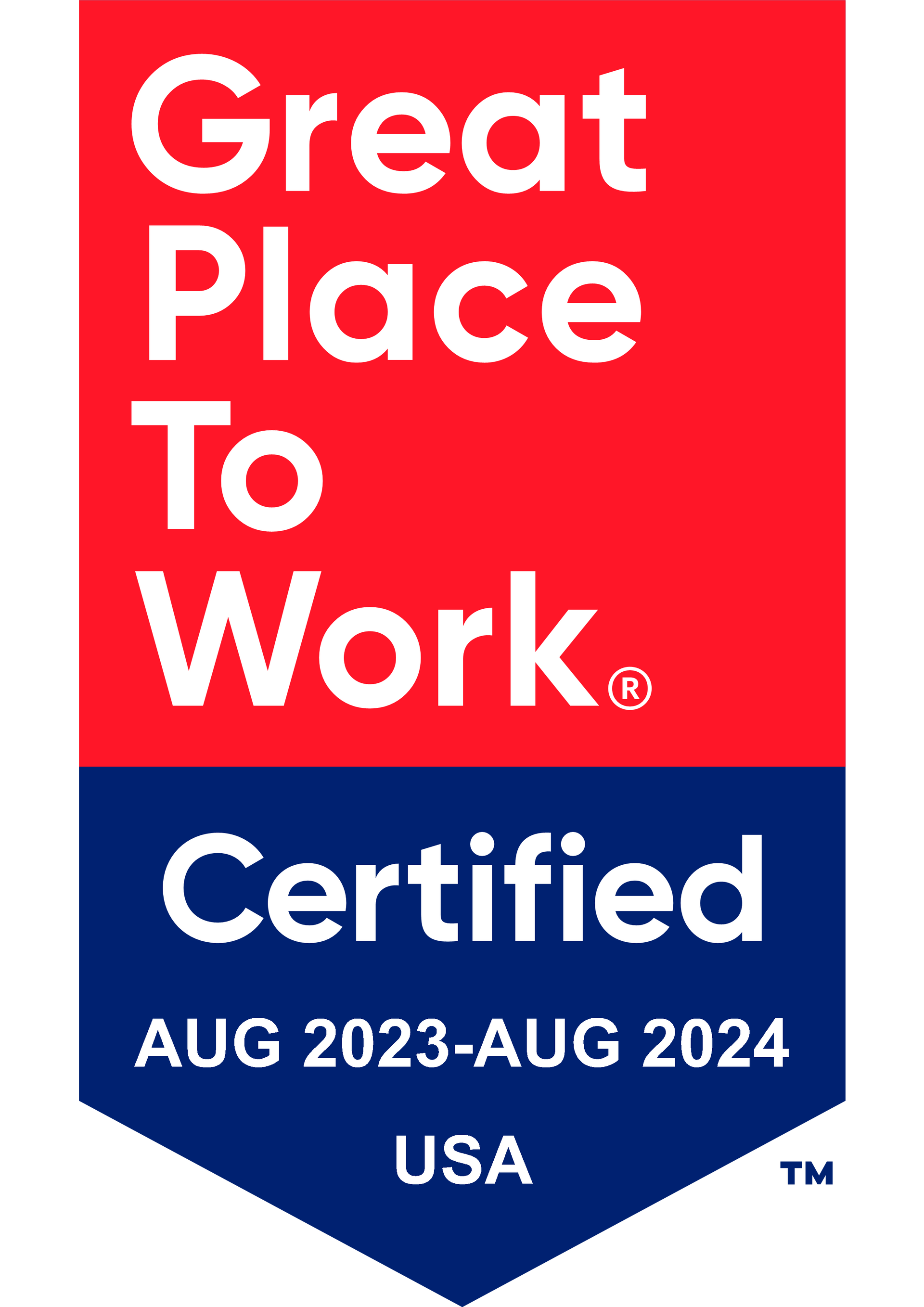Get in touch
408-366-8880
mymail@mailservice.com

Top Employee Benefits of 2020
The job market continues to shift from being employer-driven to candidate-driven. As a result, it’s now more important than ever for employers to offer competitive compensation packages to attract, hire, and retain employees. The benefits component of a compensation package is an important determining factor when employees consider a job offer. In many instances, a candidate will prefer an employment offer with a lower salary but the best benefits over a higher salary with little or no benefits. Are you wondering what the top employee benefits 2020 has to offer? Read on to learn more.
TOP EMPLOYEE BENEFITS 2020: WHAT EMPLOYEES WANT MOST THIS YEAR
As new generations enter the workforce and weigh in on what’s important to them, there has also been a shift in the types of benefits and perks offered as part of a candidate’s benefits package. As more and more workplaces consider employee benefits trends and implement non-traditional benefits to support employees’ requests, employers have room to be creative and offer benefits that cost less than traditional benefits. Medical insurance, however, as well as some other traditional benefits, is still considered one of the top employee benefits.
In today’s market, employers can offer a combination of traditional and non-traditional benefits and perks to attract top talent. Below are fifteen of the top employee benefits and innovative employee perks employers can offer in 2020.
HEALTH INSURANCE
As reported in the American Psychological Association’s 13th annual Stress in America survey, 64 percent of Americans stated that the cost of healthcare is a cause of stress for them, and two in five adults reported that either they or their family had challenges paying for health care in the past. Medical expenses are also the leading cause of bankruptcy in America.
It's no surprise, then, that medical insurance still tops the list of benefits that employees desire as part of their compensation package. Medical benefits provide security to individuals by completely or partially protecting them from expensive treatments and hospital visits. It also allows employees to take care of their families as well. Medical benefit plans can take on various forms, from the more traditional co-pay plan with a Flexible Spending Account (FSA) offered to a high-deductible plan with a Health Savings Account (HSA).
HSAs have become more popular among employees, as they can also be a savings account. And unlike FSAs, when an employee leaves a company, they can take their HSA with them. The money in an HSA is theirs, and they don’t lose it at the end of the year or after the termination of their employment. Employers can also contribute to the employee’s HSA if they choose, making it a more appealing plan for the employee.

RETIREMENT SAVINGS PLANS
Financial security is important to employees, and retirement savings plans help to provide just that. The 401(k), a defined-contribution plan that allows employers to match a percentage of employee contributions, is the most common retirement savings plan offered by employers. The employer portion traditionally vests in the future, and vesting might be graduated over time. Employers can opt to provide discretionary contributions to 401(k)s as well, making them even more appealing to employees.
PAID LEAVE AND TIME OFF
Employees need time away from the office both to take care of health-related concerns and children and to regenerate and recharge. Paid time off is one of the top benefits employees look for as part of their compensation package. The standard paid time off for entry-level U.S. jobs is two weeks, which goes up with service time or years of experience. Paid time off may extend even to volunteers and the bereaved.
DENTAL INSURANCE
Though not the most exciting benefit, dental insurance is still a popular benefit among employees. It’s a relatively low-cost benefit for employees and can save them a lot in the long run if they or someone in their family ends up needing any major dental work done.

LIFE INSURANCE
Life insurance provides a sense of security to the families who depend on the employees. A specified amount of life insurance is commonly offered free of charge to employees, and they have the option to purchase more at a relatively low cost.
FLEXIBLE SCHEDULES
It’s common for employees to quit their jobs due to challenges with their work-life balance. Because employees have lives outside of work that they need to maintain and would like to enjoy, flexible scheduling is a perk that many employees love. Offering flexible start and end times throughout the week, half-days on Friday, or a 4 X 10 (four 10 hours days and Fridays off) schedule are examples of flexible schedules that an employer may offer. Casual Fridays or casual dress throughout the week as part of the dress code is another similar perk.

REMOTE WORK
Remote work is not for everyone, but some employees love it. Offering employees the ability to work from home for some or all the time can be an appealing perk for many individuals. It can also cut down on overhead costs for employers, which is why some encourage it and even provide the required in-home office set up and equipment necessary for the employee to be fully productive and functional from their home. An employer’s concerns around productivity can be managed in several ways, including regular virtual meetings, required in-person meetings, and goals for completed work. In research conducted for the 2020 Robert Half Salary Guide, 50 percent of employers reported offering either flexible schedules or telecommuting to their employees.
MENTAL HEALTH BENEFITS
Per the Center for Workplace for Mental Health division of the American Psychiatric Association, depression costs employers approximately $44 billion annually in lost productivity, and close to half of the employees with depression have not been treated. Further, anxiety disorders affect 18 percent of adults in America and are the sixth leading cause of disability globally. Anxiety disorders cost employers approximately 5.5 days of reduced productivity per month. Depression and anxiety combined are estimated to cost $1 trillion in lost productivity globally, per the World Health Organization. Mental health disorders, such as PTSD, also have a significant impact on workplace productivity.
One way employers can support employees and reduce mental health-related costs is to offer easily accessible mental health benefits. Employers have traditionally provided mental health benefits through Employee Assistance Programs (EAP). But many employers are now opting for more direct access to providers, sometimes even having a mental health professional on-site or at a nearby clinic. Mental health education through wellness programs is also on the rise.
FINANCIAL WELLNESS BENEFITS
In the 2019 Stress in America survey sponsored by the American Psychological Association, 60 percent of Americans reported that money was a significant personal stressor. The same report shows that money as a personal stressor has been reported at a consistent level for years. Financial wellness programs go beyond offering 401(k) counseling for employees; a financial wellness program offers financial counseling services and helps employees manage their money, including paying off debt and saving for the future.

STUDENT LOAN DEBT SUPPORT
It’s no secret these days that many Americans are knee-deep in student loan debt. Per a survey conducted by Bankrate, 31 percent of Americans reported that they have or have had student loan debt, and many respondents reported that they have put off financial milestones, such as saving for the future, buying a home, or paying off other debt, due to their student loan debt. As a result, some employers have found creative solutions to this concern by offering some type of student loan debt support. Some employer programs match 401(k) contributions with student loan repayments, allow workers to transfer PTO time to pay down student debt, and offer refinancing programs for student loans.
WELLNESS PROGRAMS
With increased awareness about stress, mental health, and personal well-being in general, wellness programs that go beyond medical and mental health benefits have become popular among employees. Wellness programs have also been proven to increase workplace morale and productivity.
Wellness programs can incorporate several activities and employee perks and reach a diverse audience. Some wellness program perks include gym membership reimbursement or an onsite gym, free and healthy lunches regularly served in the office, massage therapy discounts or free in-office massages once a month, yoga memberships, in-office meditation rooms, free flu shots, and a quarterly health fair.
Wellness programs have the added benefit of engaging employees, which can help to decrease the number of unhealthy days per month from 2.17 to 1.25, as reported by Gallup. Company field days, team sports, and health-related competitions (downloading an app, for example, to track and compare employees’ steps) are examples of ways to engage employees through a wellness program.
PET-FRIENDLY BENEFITS
With more than 80 million families across America who have a pet, people take notice when employers offer pet-friendly benefits, such as pet insurance and paid time off to adopt or take care of a pet. More and more employers are allowing employees to bring pets to work as well.
FAMILY-FRIENDLY BENEFITS
With approximately 72 percent of mothers and 93 percent of fathers making up the workforce, family-friendly organizations are important to the population. There are several family-friendly benefits an employer can consider. On-site or nearby childcare is a perk that some companies offer to employees who have young children. This can reduce the stress levels of parents. Paid parental leave is important to parents with children and a perk that catches the attention of family-focused top talent. Family-friendly events and a room for nursing mothers are additional benefits that an organization may choose to offer.

TECH BENEFITS
Given that employees don’t want to carry two cell phones — one for work and one for personal use — an employer may offer a cell phone usage stipend for employees who use their personal cell phone for business purposes. Offering employees work computers for personal use is also a benefit that some employers offer.
TUITION REIMBURSEMENT
Continuing education is important to many employees, and it’s something that many employees would choose to forgo if they had to foot the bill on their own. Tuition reimbursement is a benefit that some employers have offered for years, and it is still popular among employees. Traditionally, employers approve tuition reimbursement for industry or position-related education, making the education a benefit to the employer as well. Most programs are designed with a claw-back in place, meaning that the employee would have to pay back the reimbursement if they left the company within a specified period after the reimbursement is provided. There are also IRS limits to the amount of reimbursement allowed per year.
TOP EMPLOYEE BENEFITS IMPACT RETENTION AND PRODUCTIVITY
In a recent SHRM job satisfaction and engagement survey, 92 percent of employees reported that employee benefits were important to their overall job satisfaction. In the same study, nearly a third of the employees shared said that their benefits package was a reason they were likely to look for a position outside of their current employer in the next 12 months.
These stats reveal the importance of employee benefits. Employee retention, engagement, and productivity are all enhanced by good benefits. Fortunately, there are numerous options available to employers, who now have greater freedom to experiment and mitigate costs while also giving employees the benefits they need.
CREATE THE TOP EMPLOYEE BENEFITS PACKAGE WITH KBI BENEFITS
Healthier employees equate to happier employees and increased productivity. It is also essential that employers show their employees that they do care and understand the challenges the pandemic has created.
At KBI Benefits, we will work with you to assess your current employee benefits package. We can help identify areas for improvement and determine if additional benefits could support your employees.
Contact us today by submitting our online contact form or calling us at 408.366.8880. We look forward to working with you!
Services
Latest Thinking




